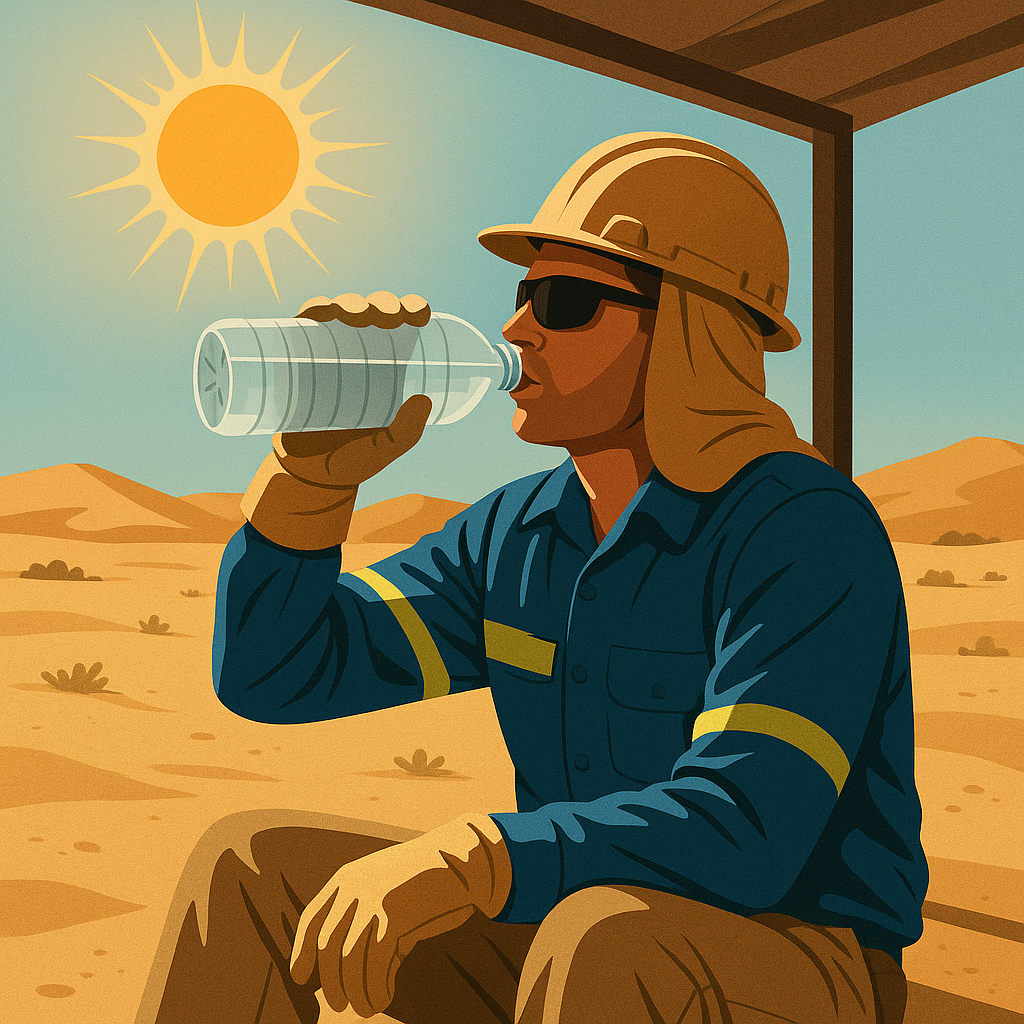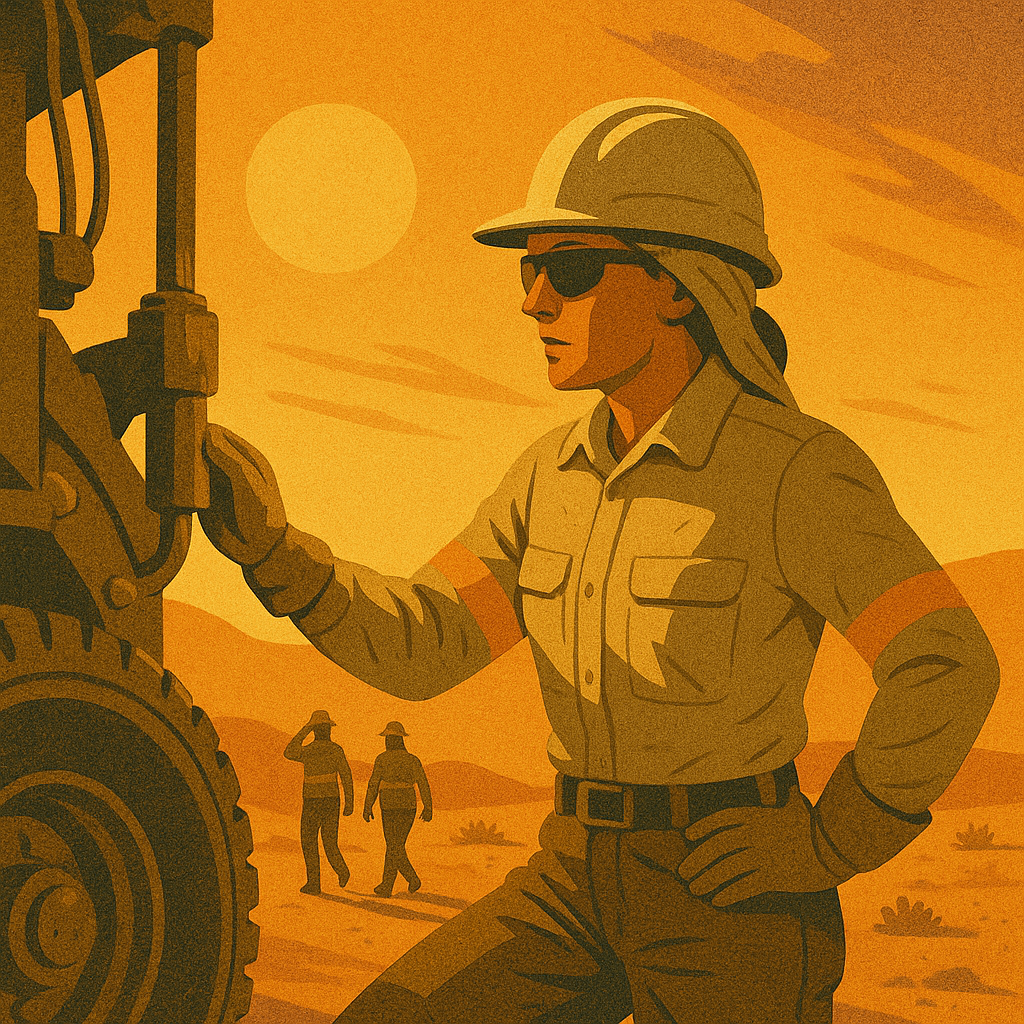Working in the desert introduces a unique set of occupational hazards not typically found in more temperate environments.
The intense heat, glaring sun, low humidity, unpredictable terrain, and often-remote work locations demand strict adherence to Occupational Health, Safety, and Environmental (OHSE) best practices.

Employers and safety officers must prepare their teams for the dual challenge of maintaining productivity while protecting lives in such harsh conditions.
- Understanding the Risks of Working in the Desert
- Heat Stress Management
- Sun Safety: PPE and Protective Clothing
- Engineering and Administrative Controls
- Dealing with Remote and Isolated Worksites
- Respiratory Protection from Dust and Sand
- Equipment and Vehicle Safety
- Wildlife Hazards in the Desert
- Training and Awareness
- Internal and External Resource Links
Understanding the Risks of Working in the Desert
The desert is not just hot—it’s extreme, with temperatures often exceeding 40°C (104°F) and plummeting sharply after sunset. These rapid changes can take a toll on the human body, equipment, and operations.
Key OHSE hazards include:
- Heat-related illnesses: Heat exhaustion, heat stroke, and dehydration are common.
- Sun exposure: UV radiation leads to sunburn, eye damage, and long-term skin cancer risks.
- Isolation risks: Delayed emergency response times due to remote locations.
- Fatigue: Heat-induced drowsiness increases the chance of accidents.
- Dust and airborne particles: Respiratory issues caused by sand and fine dust.
Proper risk assessments, desert-specific workplace safety plans, and continuous monitoring are critical.
Heat Stress Management
Heat stress is one of the most dangerous hazards when working in the desert. Employers must implement heat illness prevention programs with training, planning, and medical support.
Hydration Protocols
Workers must drink at least one cup (250 ml) of water every 15–20 minutes, regardless of thirst. Electrolyte-replenishing drinks can also help maintain salt levels. Employers should supply shaded hydration stations and set mandatory breaks.
Acclimatization
New and returning workers need to acclimate gradually. Start with 20% of a normal shift in heat, increasing by 20% daily. This reduces the risk of heat stroke and allows the body to adjust.
Sun Safety: PPE and Protective Clothing
Personal Protective Equipment (PPE) must be adapted to desert conditions:
- Wide-brim hats or desert helmets with neck flaps
- UV-rated sunglasses or goggles
- Long-sleeved, breathable clothing (light-colored, moisture-wicking fabric)
- High-SPF sunscreen (SPF 30+) reapplied every 2 hours
A good example is the summer PPE adjustments used in Middle Eastern oilfields and Australian mining operations, which combine UV protection with cooling fabrics and hydration packs.
Engineering and Administrative Controls
When PPE alone is not sufficient, engineering and administrative controls must reduce exposure.

Engineering Controls
- Portable shade structures or tents
- Cooling trailers or air-conditioned mobile units
- Water misting fans in rest zones
- Vehicle modifications with UV window film and AC service checks
Administrative Controls
- Shift scheduling: Start earlier in the morning or split into shorter intervals
- Work/rest cycles based on temperature and job intensity
- Buddy systems to detect early signs of heat illness
- Daily toolbox talks focused on hydration, PPE, and environmental hazards
Dealing with Remote and Isolated Worksites
Remote desert operations can delay medical help and complicate logistics. Employers must prepare:
- Emergency communication tools: Satellite phones or radios
- First aid kits with electrolyte packs and cold compresses
- Trained on-site responders for heat stroke, snake bites, or trauma
- GPS and tracking systems for lone workers
Companies should review their emergency evacuation protocols and ensure regular check-ins for isolated staff.
Respiratory Protection from Dust and Sand

In deserts like the Sahara or Southwestern U.S., silica dust and fine sand particles pose respiratory threats. Depending on exposure, workers may need:
- N95 or higher-rated respirators
- Face shields or goggles
- Worksite dust suppression techniques, such as water spraying
For long-term operations, air monitoring and medical surveillance programs should be implemented.
Equipment and Vehicle Safety
Machines in desert environments are prone to overheating, dust clogging, and mechanical failure. Preventive maintenance is key.
Recommendations:
- Daily inspection of cooling systems, air filters, and tires
- Use of sealed electrical systems to prevent sand infiltration
- Regular oil changes with desert-grade lubricants
- Operator cabins with UV protection and AC maintenance
Drivers should be trained in desert driving, including sand navigation and rollover prevention.
Wildlife Hazards in the Desert
Depending on the location, desert workers may encounter scorpions, snakes, spiders, or aggressive birds. Awareness training, boots, gloves, and regular site inspections are necessary to prevent bites and stings.
Make sure workers know:
- Where dangerous wildlife may hide
- How to safely inspect equipment and shoes before use
- First aid steps for venomous encounters
Training and Awareness
Regular training builds a safety culture and ensures that every worker can identify and manage desert-specific risks. Use Content AI tools or interactive modules for:
- Heat illness recognition
- First aid response
- Safe vehicle operation in desert terrain
- PPE use and maintenance
Internal and External Resource Links
For additional guidance, consult these trusted sources:
- CDC – Heat Stress (DoFollow)
- OSHA – Working in Outdoor and Indoor Heat Environments (DoFollow)
- CCOHS – Sun Safety (DoFollow)
You can also find Canada-specific OHSE content at OHSE.ca.
Internal reference: Learn more about Summer PPE Adjustments in our related post on Summer PPE: Adjusting Gear for Hot Weather Conditions.
Working in the desert demands more than just grit—it requires a comprehensive safety strategy tailored to extreme conditions. With the right mix of hydration, PPE, training, and hazard control, employers can keep their workforce safe while thriving in one of Earth’s harshest workplaces.
Employers must reinforce these strategies continually to reduce risk and ensure compliance with OHSE standards. Ultimately, the key to survival in the desert is not just enduring the elements—but respecting and preparing for them.

No comments yet